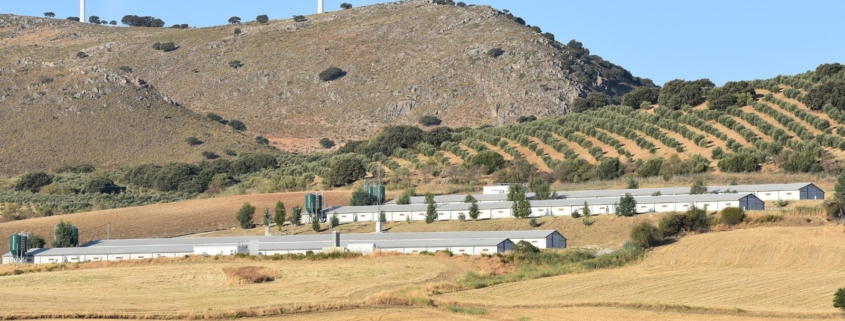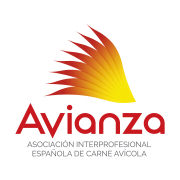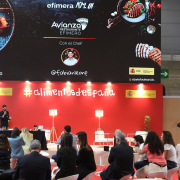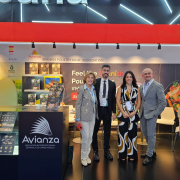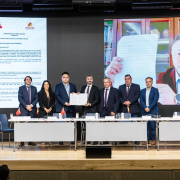AVIANZA PARTICIPATES IN THE CREATION OF THE MUNICIPAL LIVESTOCK-MEAT NETWORK
He The municipal fabric of Spain has played a crucial role in the development of the livestock-meat chain. Their lands have been used to feed and raise animals, their neighbors have worked hard in the process from the farm to the consumers' table, and the municipalities have provided the necessary facilities for these initiatives to prosper. This institutional and citizen work, together with that of companies in the sector, has allowed the livestock-meat chain to be, for several decades, the main economic engine and backbone agent of Rural Spain.
In this sense, in gratitude for the constant support provided, the six interprofessional meat organizations (ASICI, Avianza, Intercun, Interovic, Interporc and Provacuno), have launched the “Municipal livestock-meat network”, a platform that aims to pay tribute to all those municipalities in Spain in which meat has become a hallmark of its own identity. With this gesture, the meat interprofessionals want to return the affection received over the years by all citizens and municipal corporations and value their contribution to the development of the meat sector and the economy in general.
In addition to paying this tribute, the “Municipal Livestock-Meat Network” was born with the vocation of becoming a dialogue platform between the private and public sectors at the municipal level, so the Network aspires to strengthen alliances with those municipalities with livestock-meat activities that want to contribute to the recognition of the chain as a development lever. The network will be representative of the social, geographical, political and cultural diversity of our country.
How to be part of the Network
Interprofessional organizations are currently in contact with dozens of city councils throughout Spain, with the aim of integrating them, a process that has already begun and will take place in the coming weeks. However, any municipality where the livestock-meat sector is active can be part of the network, through the approval of an institutional declaration by the plenary session of the town councils. Interested municipalities will find all the necessary information on the website redganaderocarnica.es.
Development of rural areas
The “Municipal Livestock-Meat Network” will seek to highlight the symbiotic relationship that exists between this socio-economic sector and the municipalities of the regions in which it operates. It must be taken into account that livestock-meat activity plays a fundamental role in establishing population in many localities, thus reducing the territorial gap in the country and the progressive process of depopulation of rural areas. The great livestock diversity that exists and the conditions of the chain itself, which makes it easier for a large population to settle near farms and businesses, has allowed the areas with a livestock-meat presence to resist the challenge much better, in many cases until reversing the process.
The variety of species and livestock forms also allows us to conserve and take advantage of many of the landscapes of Rural Spain. The mountain areas host a good part of the cattle, the unproductive lands and of high ecological interest are grazed by sheep and goats, the Iberian pig is part of the landscape of the pasture, the rabbit farms are located in nuclei of less than 2,000 inhabitants and the white-coated pig represents one of the sectors with the highest economic profitability in towns with less than 5,000 inhabitants.
The agri-food sector, and the meat subsector in particular, is also an opportunity to develop associated industrial initiatives in these areas where employment is generated and economic activity is diversified. In the case of the meat industry, which is the leading branch of food in Spain, industrial activity is made up of 2,750 companies, among which there are many small and medium-sized ones. These companies are preferably located in rural areas with the same difficulties as the territory on which livestock farming is based.
Opportunity generator
The livestock-meat chain contributed 42,000 million euros to the national GDP in 2019, (15,172.6 million from livestock production and 26,822 million euros from the meat industry), which represents 22.6% of the entire food sector. In 2019, the meat-livestock subsector reached 28.8% of Final Agricultural Production and 77.4% of Final Production generated by the entire animal sector according to the MAPA.
Regarding employment, livestock farms, the meat industry and the entire distribution and sales system generate 672,000 direct jobs. The total is distributed among the half a million people dedicated to livestock farming, the 97,000 workers in the meat industries and the 75,000 people employed in retail trade. In total, it is estimated that about two million people make their living from the livestock-meat chain in our country, including agricultural production for livestock, and the sectors of veterinary professionals, feed, animal health, logistics and transportation, and auxiliary industries.
Regarding exports, the volume in 2019 reached 7,555 million euros, which is equivalent to the entire Spanish wood and cork industry, with a growth of 26% in foreign turnover and 15.1% in volume compared to the figures from the previous year. These figures have a special strategic relevance at a time when international trade is suffering a strong decline and where the livestock-meat chain has emerged as a guarantee to maintain the positive balance of the balance of payments.
Meat trade has a strong countercyclical and resilient component, since in the month of April 2020, in full confinement, while the year-on-year variation rate of our exports for all economic sectors fell by 39.3%, that of meat increased 13% for a value of 635 million euros.

